At the top of the list of EcoFlow power stations are two exceptional products, the EcoFlow Delta Pro Ultra and the EcoFlow Delta Pro 3. Deciding between these two heavy-duty power stations is not just about price. It’s worth verifying that your initial investment goes toward the right EcoFlow model.
In this guide, we’ll closely compare the details to help you understand which is the right choice for your situation. You can forget the wild marketing claims. By translating the specs into meaningful takeaways, you’ll be able to truly understand what these can power and for how long.
Are you ready to understand the differences between the EcoFlow Delta Pro Ultra and Delta Pro 3? Let’s get to the bottom of this question.
We carefully select the products and services we link to. If you buy through our links, we may earn a commission. There’s no extra cost to you and it helps us provide this information.
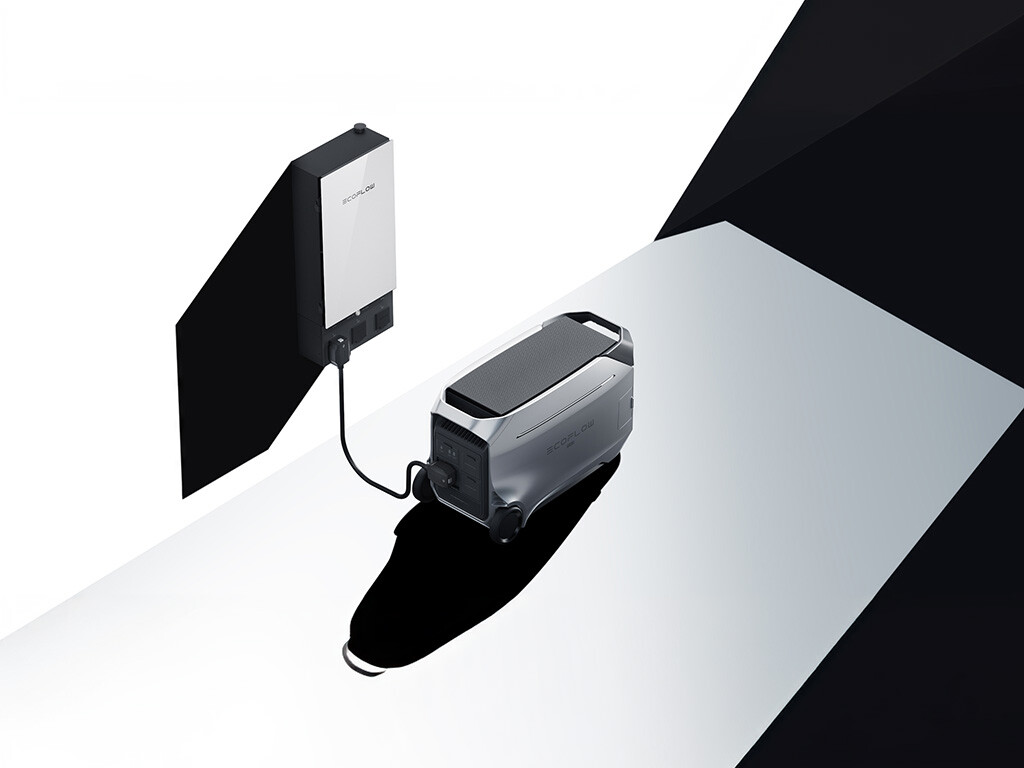
Quick Summary: Absolute Power vs. Portable Performance
When comparing the EcoFlow Delta Pro Ultra and Delta Pro 3, it’s all about balancing power and portability. The tricky part is that they’re both super powerful and they both offer some portability. Yet the differences go deeper than you might expect.
While both of these are incredible power stations above nearly every competitor around, the EcoFlow Delta Pro Ultra is far superior to the Delta Pro 3. Here’s why:
- Significantly more battery capacity and inverter output
- Superior solar charging limits with more flexible input specs
- Better UPS function
- Two-part system keeps weight somewhat manageable
There are many cases where you don’t have to pay the big bucks for the Pro Ultra. In fact, the EcoFlow Delta Pro 3 isn’t far behind the Ultra. Here are some of its most attractive features:
- Integrated battery unit increases portability
- Still serves major power needs including 240V output
- All-around excellent system with well-balanced specs
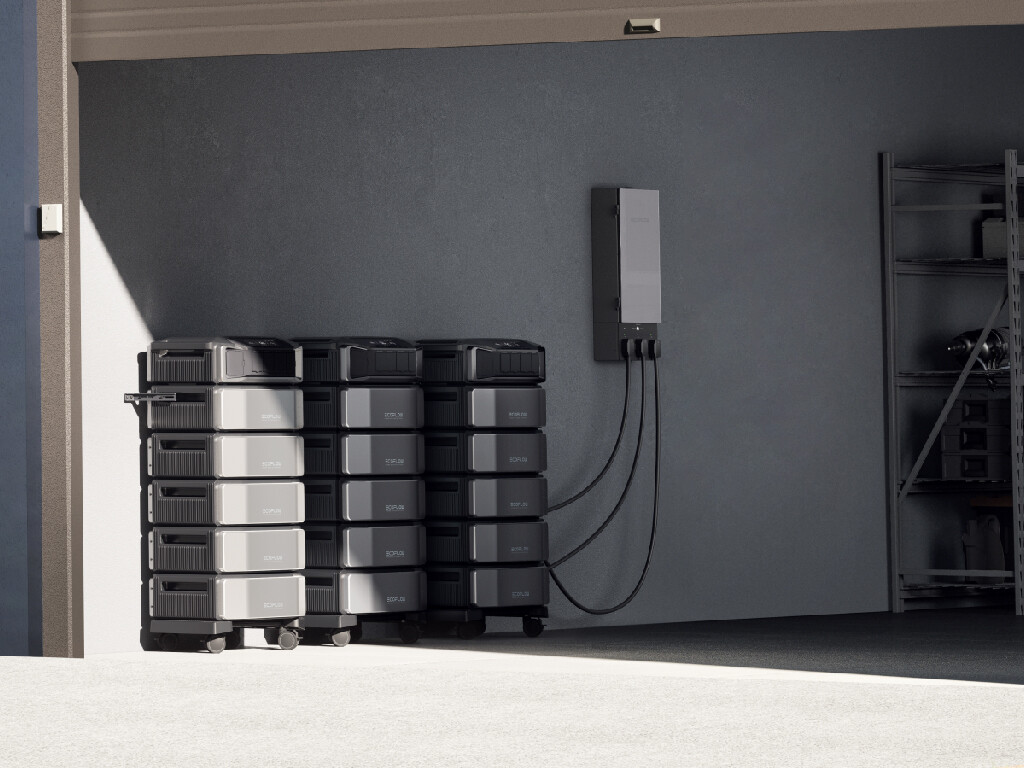
When it comes to price and value, both power stations offer competitive pricing when judged on a cost-per-watt-hour basis. While the Delta Pro 3 offers a lower initial investment and minimum cost, the Delta Pro Ultra justifies its higher price tag with bigger capacity and enhanced capabilities. They both offer excellent values with price per Wh among the lowest in the industry.
And don’t overlook the 30% solar tax credit. Both of these can qualify to give you a nice chunk of change back at tax time.
In the end, if you’re looking for the most juice to run your whole home, the EcoFlow Delta Pro Ultra takes the win. It starts off big and can grow into an absolutely massive system. Yet if you want something slightly more portable and with a lower starting cost, the EcoFlow Delta Pro 3 is a smart and versatile option, featuring better compatibility with certain EcoFlow accessories.
Get 5% off most EcoFlow orders with SOLARWAY5OFF discount code.

|
EcoFlow DELTA Pro Ultra |
DPU on EcoFlow DPU on Amazon |

|
EcoFlow DELTA Pro 3 |
DP3 on EcoFlow DP3 on Amazon |
In-Depth Comparison: EcoFlow Delta Pro Ultra vs. Delta Pro 3
In this detailed breakdown, we’ll help you see how these two units stack up by examining the core features that impact real-world use. We’ll also provide the knowledge needed to actually understand what the specs mean.
Here’s what we’ll cover in this heavy-duty power station comparison:
- What Can These Power? Inverter and Outputs
- How Long Will They Last? Battery Details
- How Fast Can They Charge? Charging Inputs
- Are They Hard to Move? Portability and Dimensions
- Which Should You Buy? Final Verdict
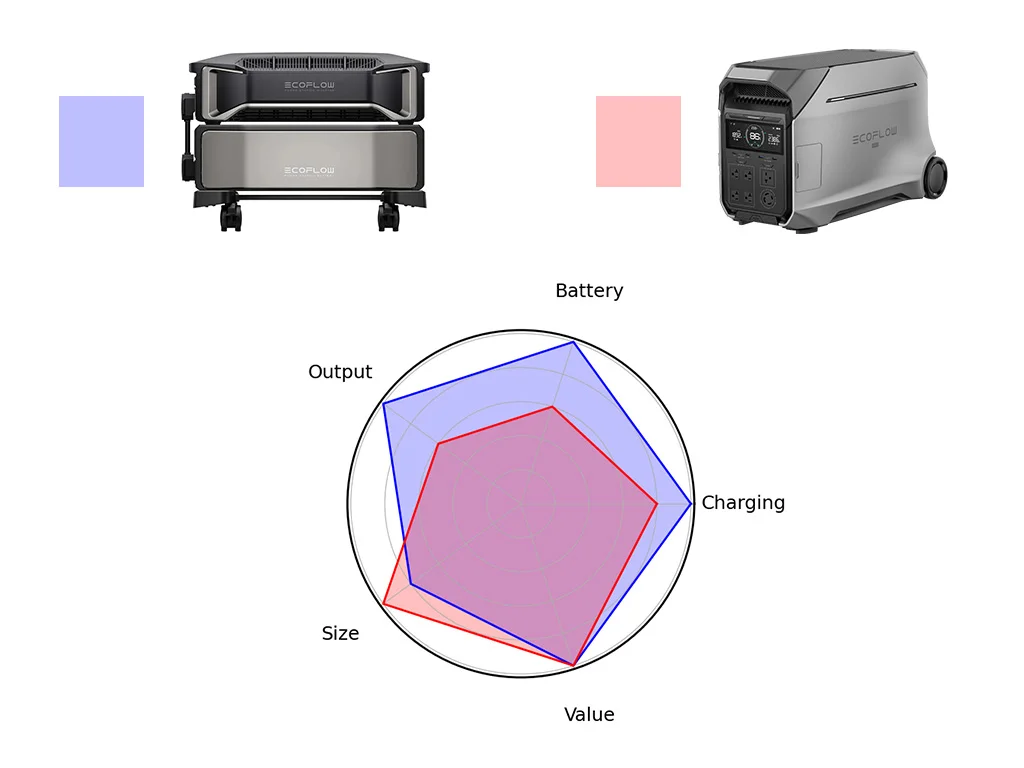
Powering Your Devices: Inverter and Output Options
The inverter is what transforms the raw DC energy from a power station’s battery into the AC power most household devices need. It’s a critical component because the inverter’s capacity determines what types of appliances you can run and how many devices you can power at once. How much more powerful is the DPU compared to the DP3?
The Delta Pro Ultra has a powerful 7,200W continuous inverter, allowing it to handle even the most demanding devices, like air conditioners or large refrigerators.
The Delta Pro 3 comes with a 4,000W inverter. This is still quite powerful but more suited to mid-range devices. Hitting this upper limit is entirely possible even while avoiding heavy-duty appliances.
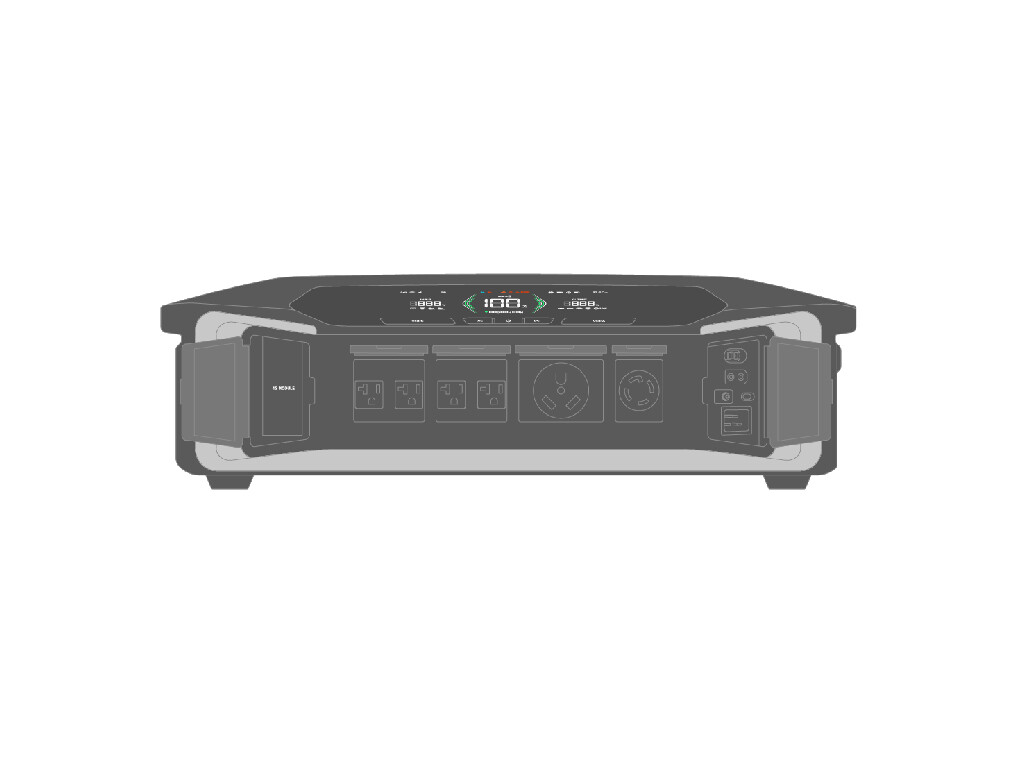
Here’s a quick look at the running wattage of common devices:
- Low-watt devices (100W or less): Phones, laptops, Wi-Fi routers, portable fridges
- Medium-watt devices (200W to 800W): TVs, refrigerators, desktop computers
- High-watt devices (1,000W to 2,000W): Microwaves, coffee makers, hair dryers
- Heavy-duty appliances (2,500W and up): Large induction cooktops, whole-home air conditioners
Consider the devices you want to run and add up the wattage. Does this get over 3,000W? Then you should pretty seriously consider the Delta Pro Ultra. If you want to run some medium-watt devices (TV and fridge) all the time, then use a high-watt every now (microwave or hair dryer), you can be inching too close to the maximum rating of the DP3.
However, these inverter specs are only for one unit. You can use up to three Delta Pro Ultras or three Delta Pro 3s in one system.
That puts the DPU up to a mind-boggling 21.6kW (21,600W) and the DP3 at 12kW. It’s nearly impossible for many households to hit the DPUs maximum. However, the DP3’s 12kW isn’t quite as untouchable.
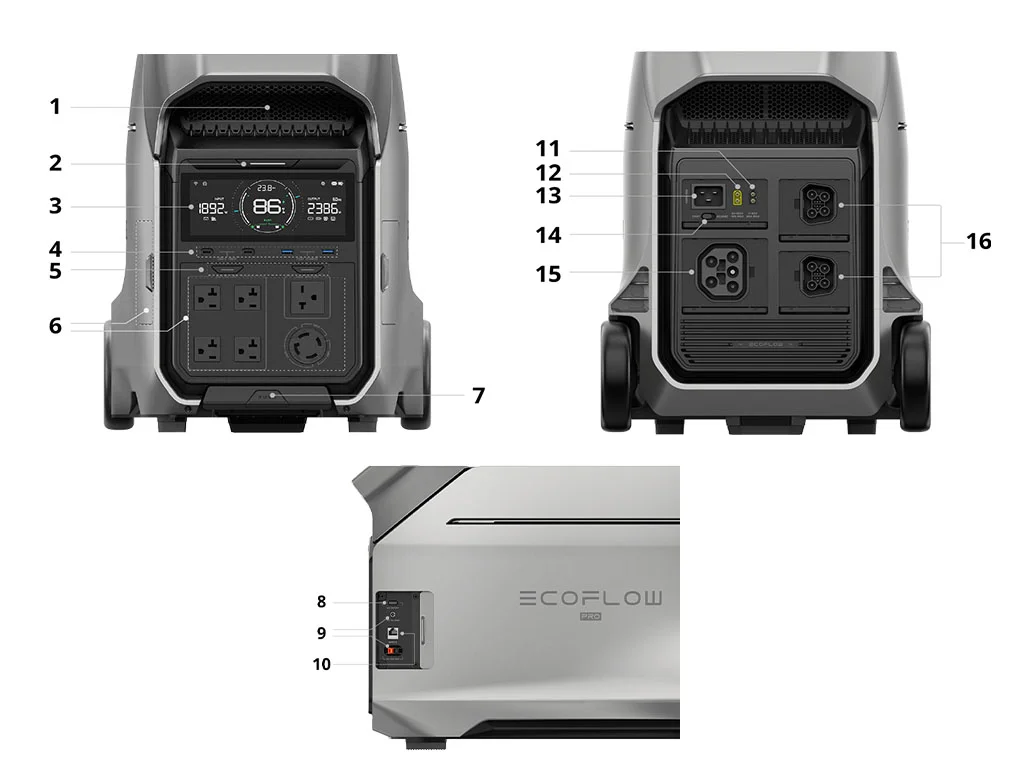
When it comes to outlet options, both units are extremely well-equipped with everything you could need to power your appliances, home, or RV:
- Multiple high-amp AC outlets with 240V output for home backup, RV shore power, or heavy-duty appliances
- High-amp DC port ready to feed a DC fuse box
- Multiple standard AC outlets to directly connect devices
- Four USB ports (2 Type A and 2 Type C)
- DC 5521 barrel plug — ONLY on the DP3 — Great for CPAPs
The Delta Pro Ultra has some outlets with an online uninterruptible power supply (0ms transfer time), ensuring no interruption in power during an outage. Other DPU outlets has <20ms UPS, which is fast but may cause some disruptions for sensitive electronics. The Delta Pro 3 has some outlets with a <10ms transfer time. This matches many of the best UPS devices.
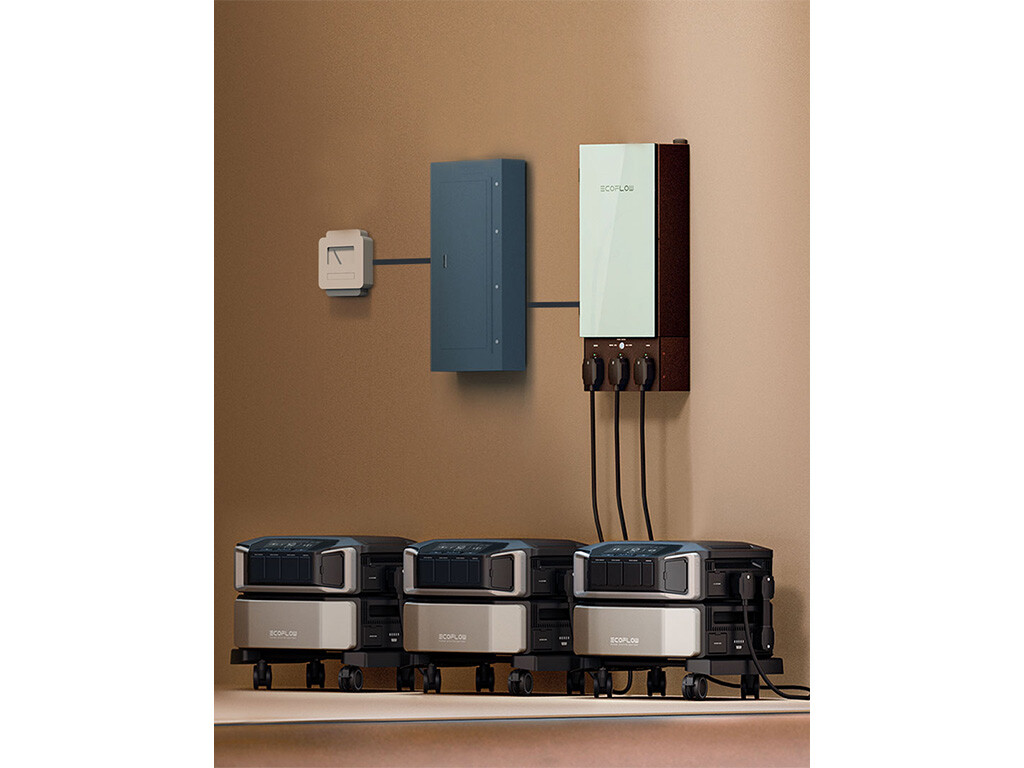
For whole-home integration and RV use, there’s not much of a difference. You can tie into your home circuits with almost any transfer switch and critical loads panel with either power station. And they both offer the high-amp outputs that make powering an RV happen instantly.
We highly recommend the EcoFlow Smart Home Panel 2, which is compatible with both the Pro Ultra and Pro 3. It is an intelligent automatic transfer switch that puts the ultimate control into the palm of your hand through the EcoFlow app. You can also go with other brands of transfer switches.
Output Verdict: The EcoFlow Delta Pro Ultra is a much more powerful option with a better inverter and lofty maximum output which you’re unlikely to ever grow out of. The Delta Pro 3 is a bigtime power station that can handle most home backup needs, but there are quite a few situations with heavy-duty appliances where one DP3 won’t be enough.
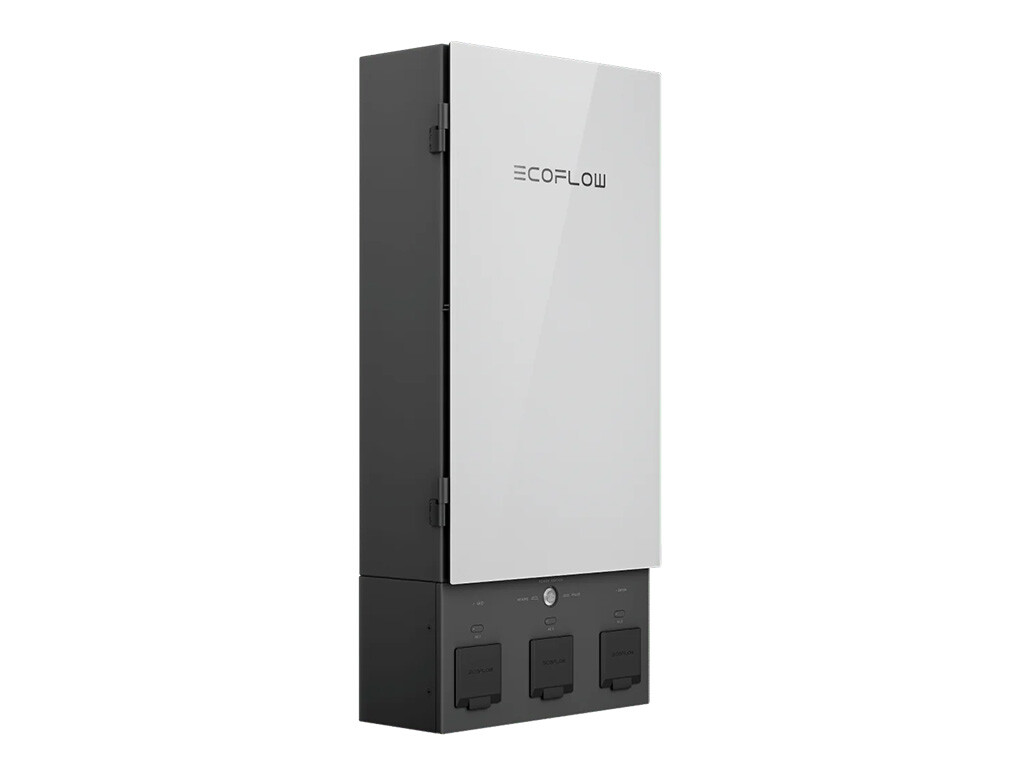
|
EcoFlow Smart Home Panel 2 |
SHP2 on EcoFlow |
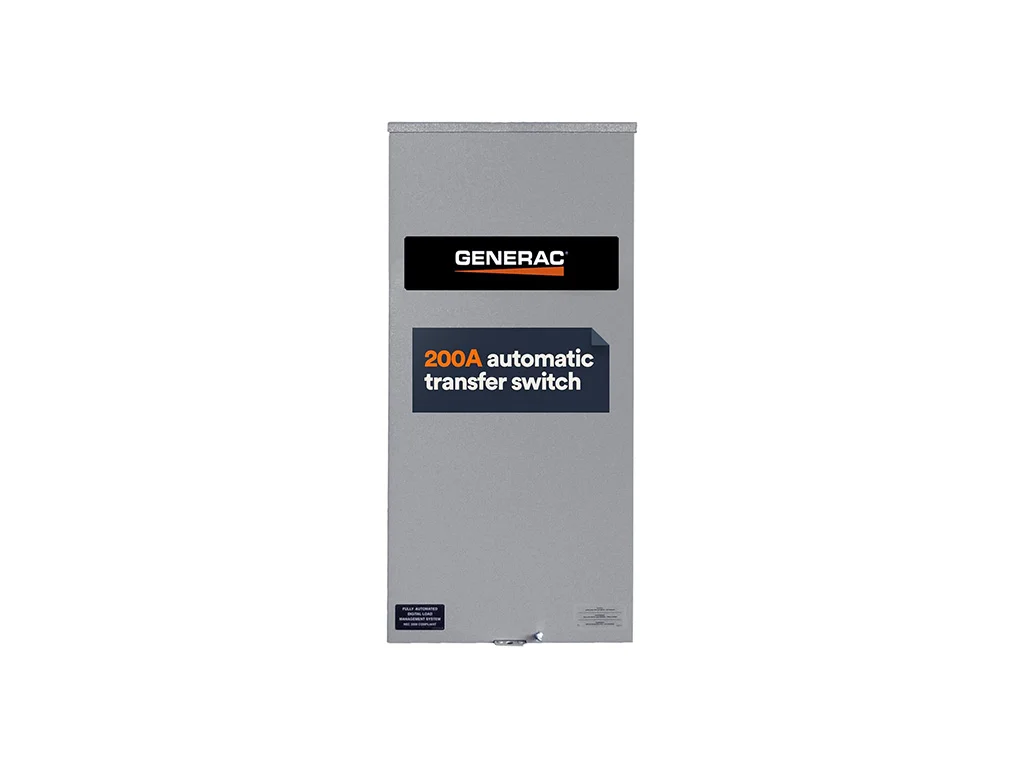
|
Generac Automatic Transfer Switch |
Buy on Amazon |
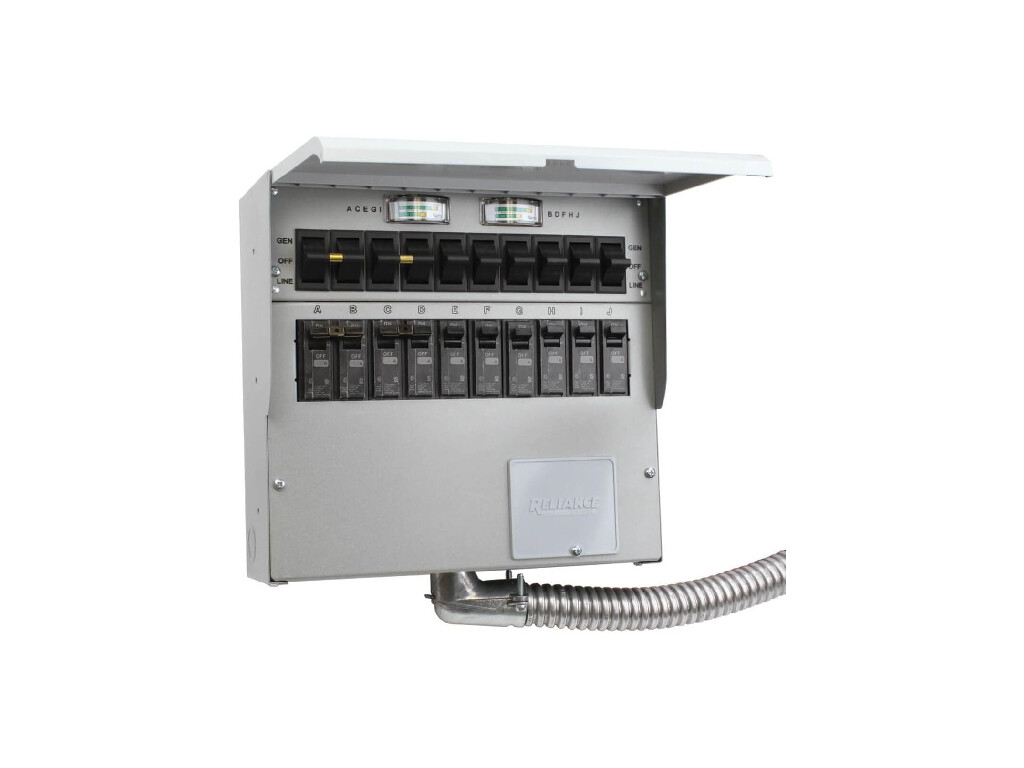
|
Reliance Controls 510C 50-Amp Manual Transfer Switch |
Buy on Amazon |
| Product | EcoFlow DELTA Pro Ultra | EcoFlow DELTA Pro 3 |
|---|---|---|
| AC Output | 7,200W | 4,000W |
| AC Output (System Max) | 21,600W | 12,000W |
| 120V Outlets | 5 (4x20A, 1x30A) | 5 (1xTT-30R) |
| 240V Outlets | 1x30A | 2 (L14-30 & 6-20R) |
| UPS / EPS | 0ms / 20ms | 10ms |
| USB-A Ports | 2x15W | 2x18W |
| USB-C Ports | 2x100W | 2x100W |
| Other DC (Anderson or other) | 1x378W (30A) | 1x378W (30A) |
| DC 5521 (Barrel Plug) | – | 1x63W 5A |
| Connectivity | WiFi / Bluetooth / 4G | WiFi / Bluetooth |
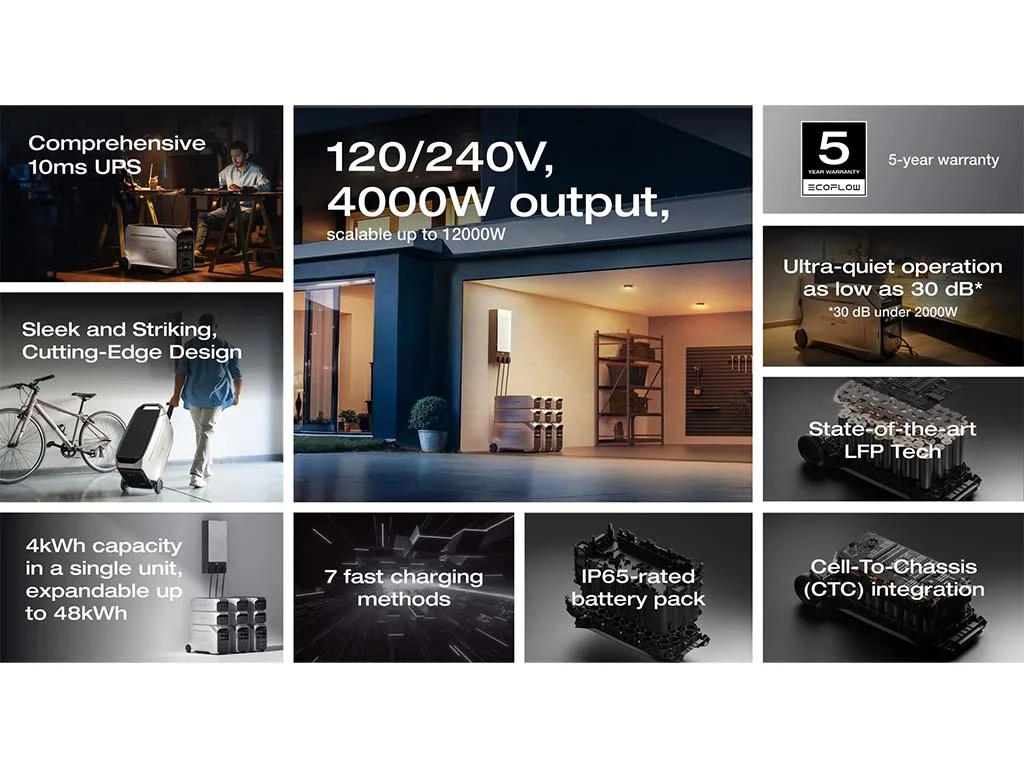
Battery Life and Capacity: How Long Will They Last?
Battery capacity is measured in watt-hours (Wh), which tells you how much energy the unit can store. And how long they will last while powering your devices.
The Delta Pro Ultra boasts a whopping 6,000Wh capacity, while the Delta Pro 3 offers a respectable 4,096Wh. To put that into perspective:
- A 60W laptop can run for about 80 hours on the Pro Ultra and roughly 55 hours on the Pro 3.
- A group of devices using 600W total (fridge, TV, and small electronics) can run for around 8 hours with the Ultra and 5.5 hours with the Pro 3.
The time starts to dwindle when you add on more powerful devices. Items like microwaves and coffee makers don’t consume that much battery because they only run for short bursts. But whole-home air conditioners and induction cooktops can chew through one battery even from the DPU in a matter of hours.
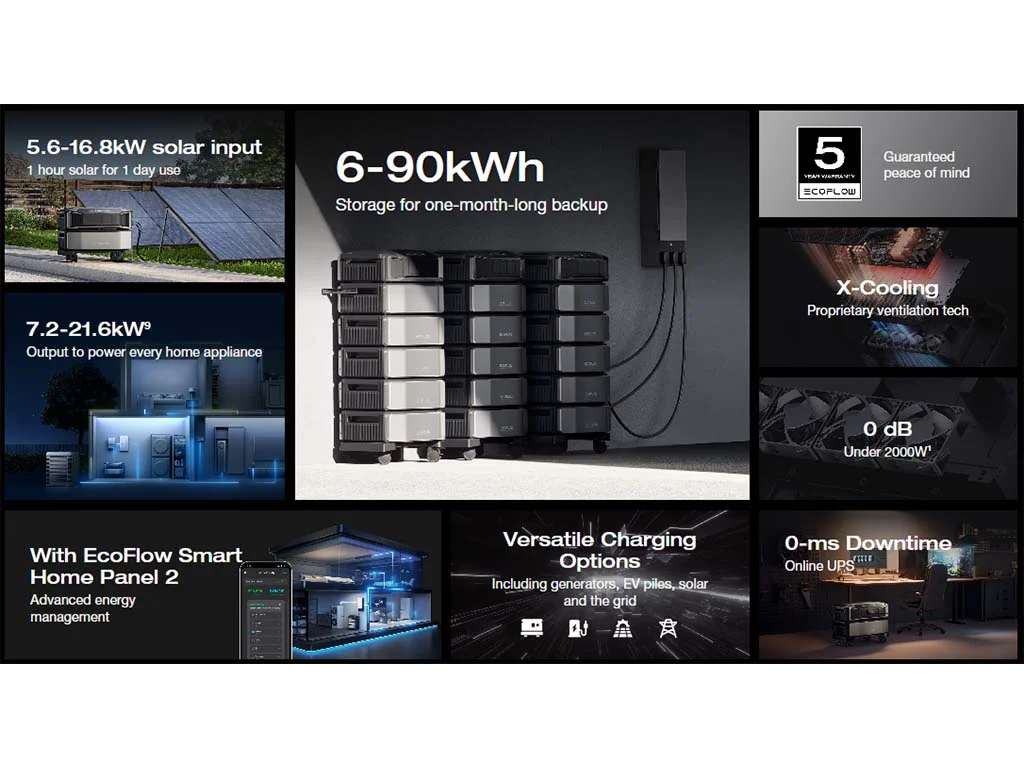
And that’s where extra battery units step in. By adding more batteries, you extend the runtime of either power station.
Once again, the EcoFlow Delta Pro Ultra reaches into the stratosphere, far above almost every power station, with up to 90,000Wh of total battery capacity. It is the ideal choice for long-term off-grid energy needs or whole-home backup. The Delta Pro 3 can also expand, reaching a maximum of 36,864Wh with extra units. While respectable and more powerful than the vast majority of other power stations, the DP3 simply doesn’t touch the max specs of the DPU.
You can run 1,000W of continuous use (a large amount of energy) for three full days on the maximum Delta Pro Ultra setup. That shrinks to less than 30 hours from the Delta Pro 3. If you want to continuously run a large air conditioner, the DPU is the right choice as that will take the running wattage even higher.
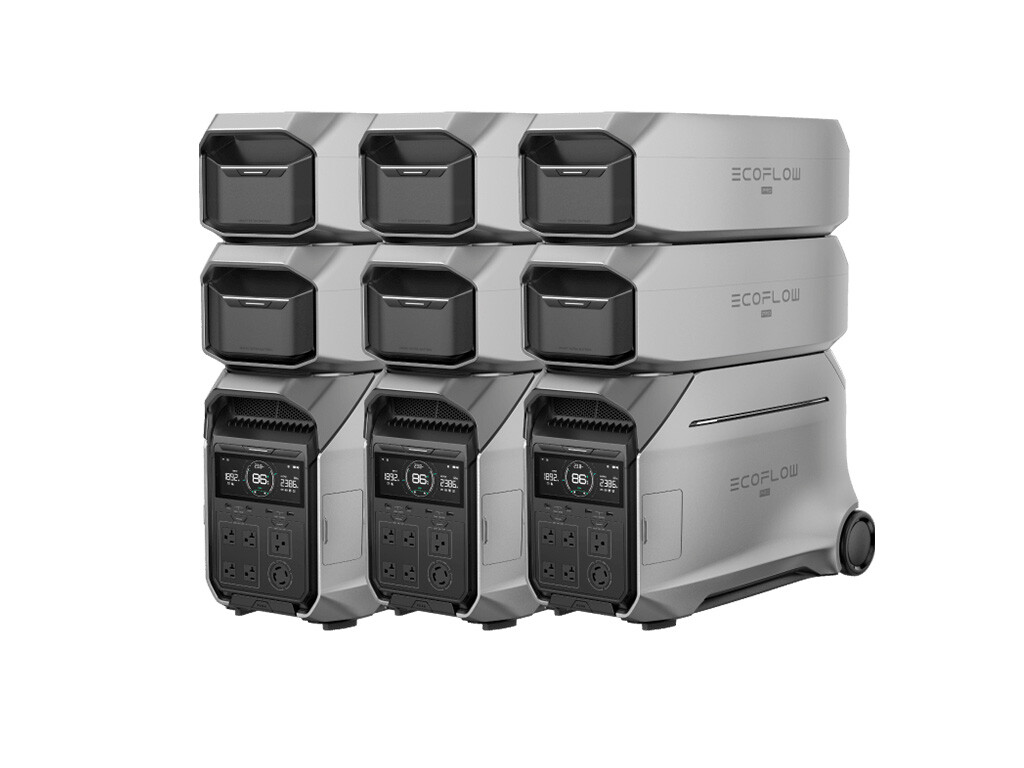
Both units are equipped with LiFePO4 (LFP) batteries, known for their durability and safety, offering over 3,000 charge cycles. That’s nearly 10 years of daily use before they start losing capacity. On top of that, they both come with a 5-year warranty. These are long-term investments.
Battery Verdict: The EcoFlow Delta Pro Ultra comes with significantly larger single-unit battery capacity and nearly three times the maximum capacity. The DPU is simply unbeatable in this area. The Delta Pro 3 has solid battery performance for those that don’t need as much power. It can handle your basic essentials along with some comforts, but it may struggle with heavy-duty appliances for long periods.
| Product | EcoFlow DELTA Pro Ultra | EcoFlow DELTA Pro 3 |
|---|---|---|
| Battery | 6,000Wh | 4,096Wh |
| Battery (System Max) | 90,000Wh | 36,864Wh |
| Warranty | 5 years | 5 years |
| Battery Type | LiFePO4 / LFP | LiFePO4 / LFP |
| Battery Cycles | >3,000 | >3,000 |
| Buy Now | Buy DPU | Buy DP3 |
| Buy on Amazon | EcoFlow DPU on Amazon | DP3 on Amazon |
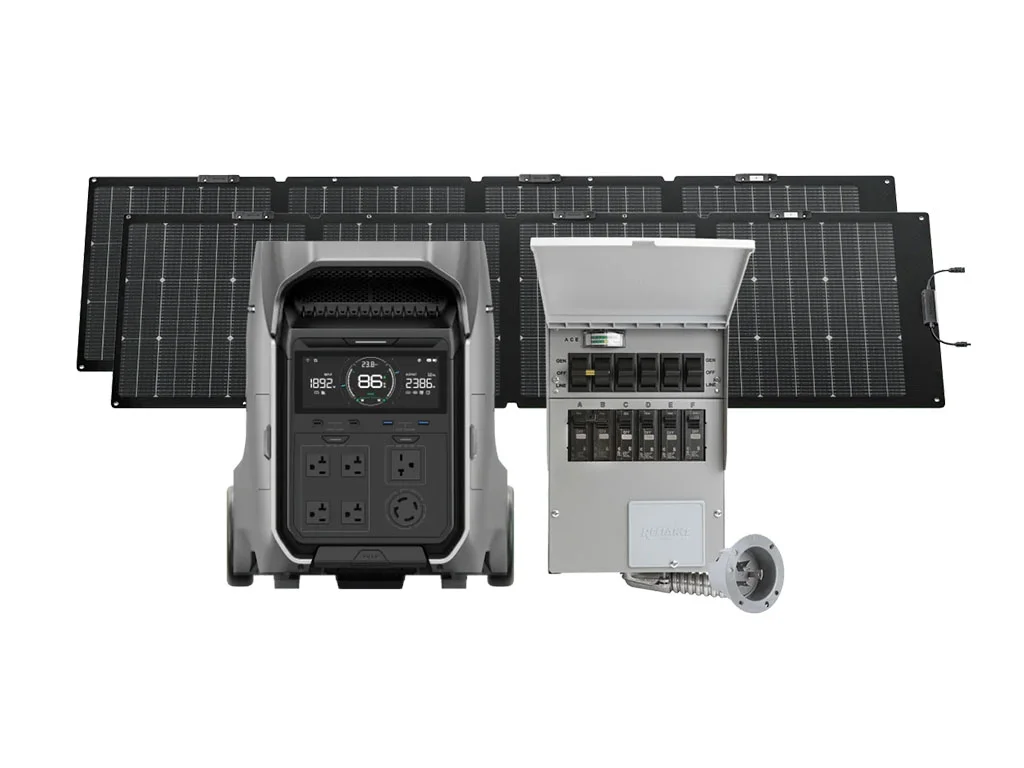
Charging Speeds and Input Details
Fast charging is crucial when you need to quickly top off your power station between uses, prep for a trip, or restore power during an outage. Both the EcoFlow Delta Pro Ultra and Delta Pro 3 offer a variety of charging methods.
The most common methods for recharging these units are AC power and solar panels, though options like fuel generators or car charging can provide added flexibility. The faster the charging input, the quicker your power station will be ready to go.
Here’s how they compare:
- AC Charging:
- Delta Pro Ultra: Capable of charging at 7,200W, allowing it to fully charge in 1 hour from a high-powered AC source (if you can find it)
- Delta Pro 3: Charges at up to 4,800W, taking around 1 hour and 40 minutes to recharge from a high-powered AC outlet.
- A standard wall outlet offers 1,800W maximum (120V / 15A) so expect longer charging times for either unit if you aren’t using a high-amp or high-voltage source.
- Solar Charging:
- Delta Pro Ultra: Offers two solar inputs with 5,600W total. This includes one that can handle up to 450V and another up to 150V. These voltage limits are very high and make it easy to connect multiple large solar panels in series. It can charge in as little as 1.3 hours with optimal sunlight.
- Delta Pro 3: Two solar inputs with a more limited 2,600W total. Inputs have 150V and 60V maximums, meaning you’ll have to use more caution when maxing out solar charging with this power station. It will take about 1.9 hours to fully recharge via solar under ideal conditions.
The solar differences are another reason to go for the DPU. Not only can it simply handle a lot more solar panels, its inputs are much easier to work with. The 450V of the DPU leaves a lot of room while the DP3’s 150V max requires more care and careful selection of the solar panels you use with the Delta Pro 3.
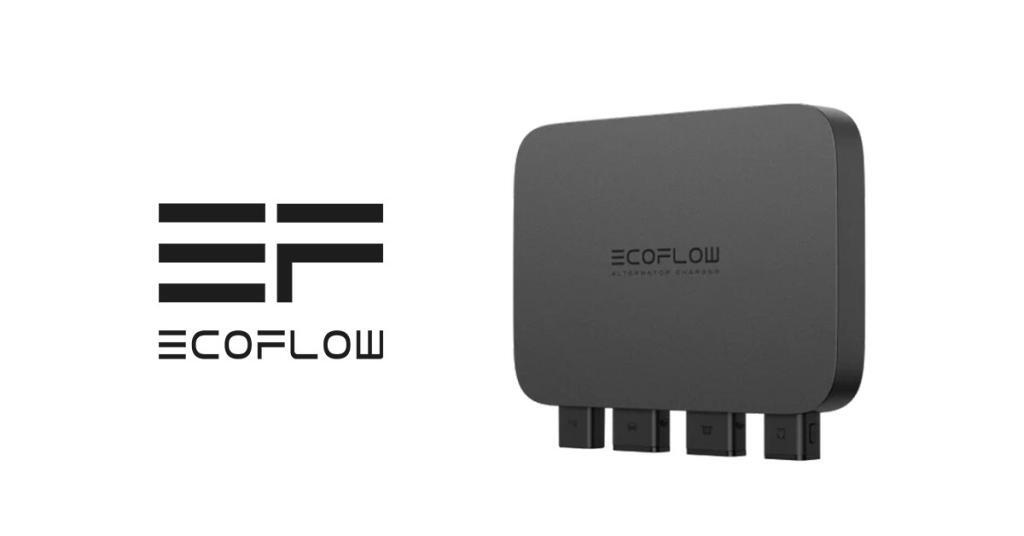
On the flipside, car charging is a different story. While usually impractical for batteries this size, that changes when you introduce the EcoFlow 800W Alternator Charger. This is NOT compatible with the Delta Pro Ultra but does work with the Delta Pro 3. However, the DPU can use the Bluetti 560W Alternator Charger 1 instead. It features universal MC4 connectors with adjustable voltage.
Another benefit of the DP3 is that you can use the EcoFlow Dual Fuel Generator’s DC output. This is a high-powered charging source. The DPU can use almost any inverter generator as well, but it’ll have to go through the AC systems.
Charging Verdict: The EcoFlow Delta Pro Ultra not only has faster charging speeds, it also has a solar input with 450V max making it much easier to connect multiple panels safely. The Delta Pro 3 is more limited in its solar capabilities. The DP3 has better EcoFlow options for car charging and fuel generator charging, yet the DPU can use universal options with similar results.
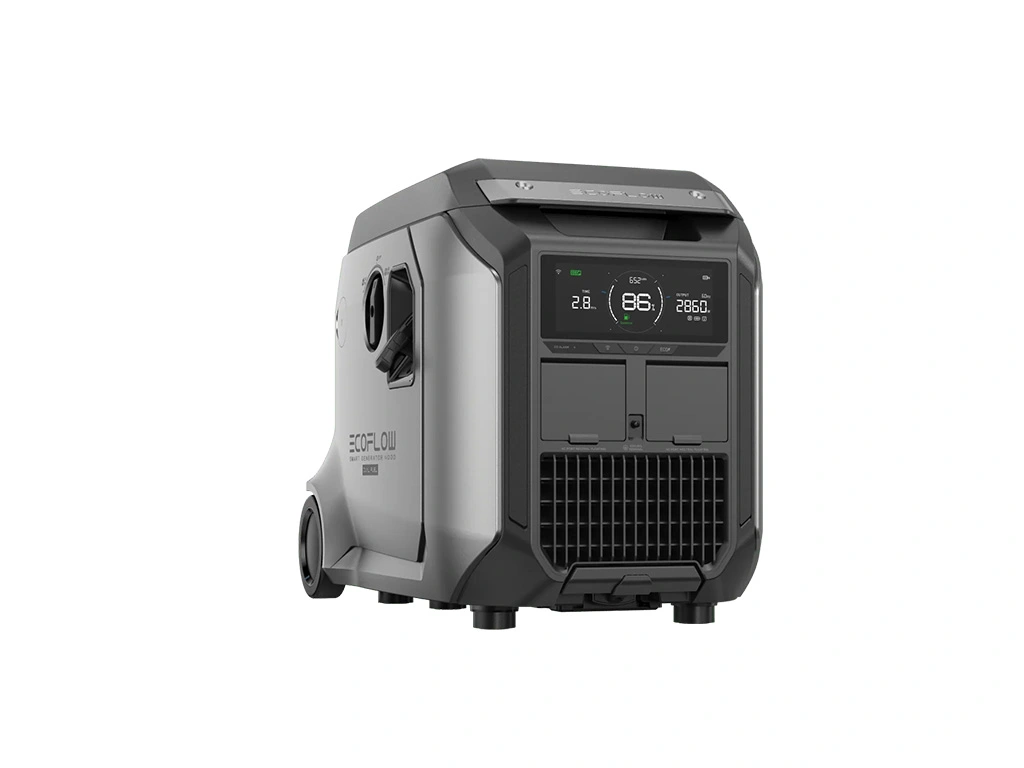
|
EcoFlow Smart Generator 4000 (Dual Fuel) |
4kWSG on EcoFlow |
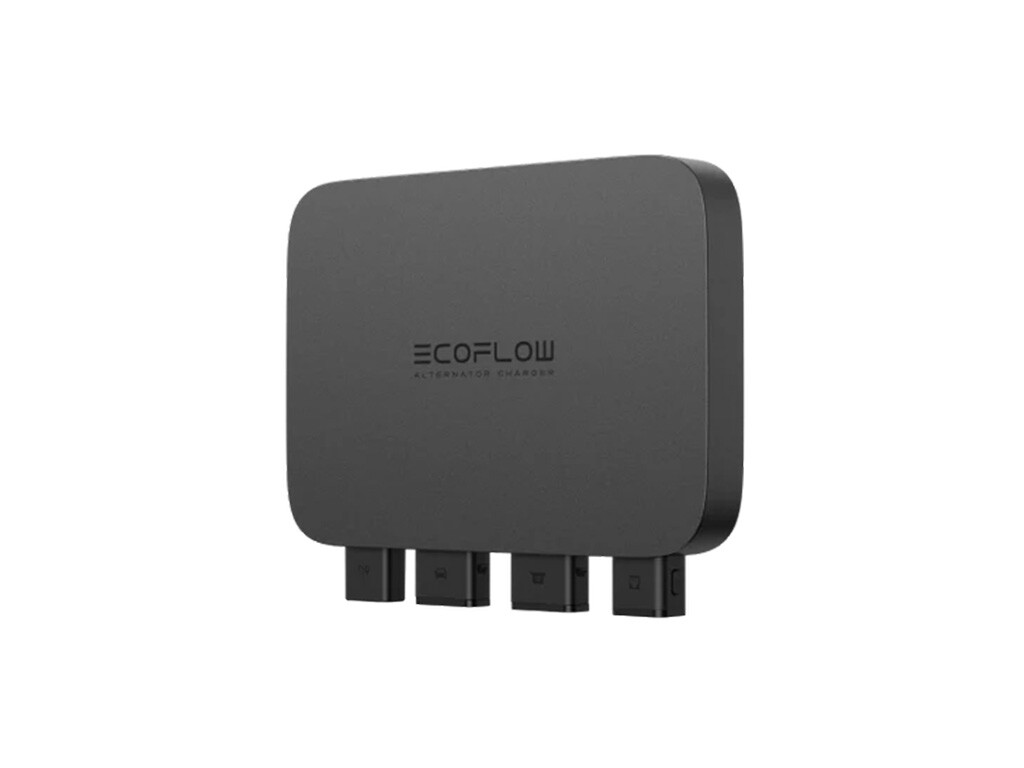
|
EcoFlow 800W Alternator Charger |
EFAC on EcoFlow EFAC on Amazon |
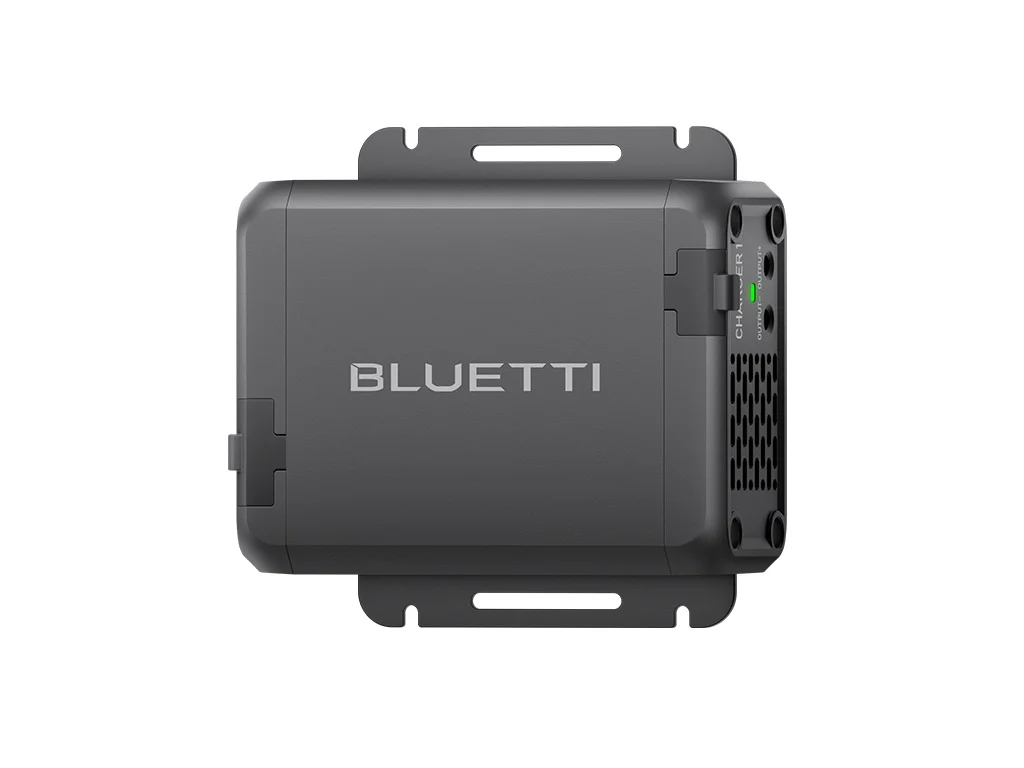
|
BLUETTI 560W Alternator Charger 1 |
Charger on Bluetti |
| Product | EcoFlow DELTA Pro Ultra | EcoFlow DELTA Pro 3 |
|---|---|---|
| AC Input | 7,200W | 4,800W |
| AC Recharge Hours (Est.) | 1h | 1h |
| Solar Input | 5,600W | 2,600W |
| Solar Recharge Hours (Est.) | 1.3h | 1.9h |
| Solar Input (System Max) | 16,800W | 7,800W |
| Solar Input 1 Watts | 4000W | 1600W |
| Solar Input 1 Volts Min | 80V | 30V |
| Solar Input 1 Volts Max | 450V | 150V |
| Solar Input 1 Amps | 15A | 15A |
| Solar Input 2 Watts | 1600W | 1000W |
| Solar Input 2 Volts Min | 30V | 11V |
| Solar Input 2 Volts Max | 150V | 60V |
| Solar Input 2 Amps | 15A | 20A |
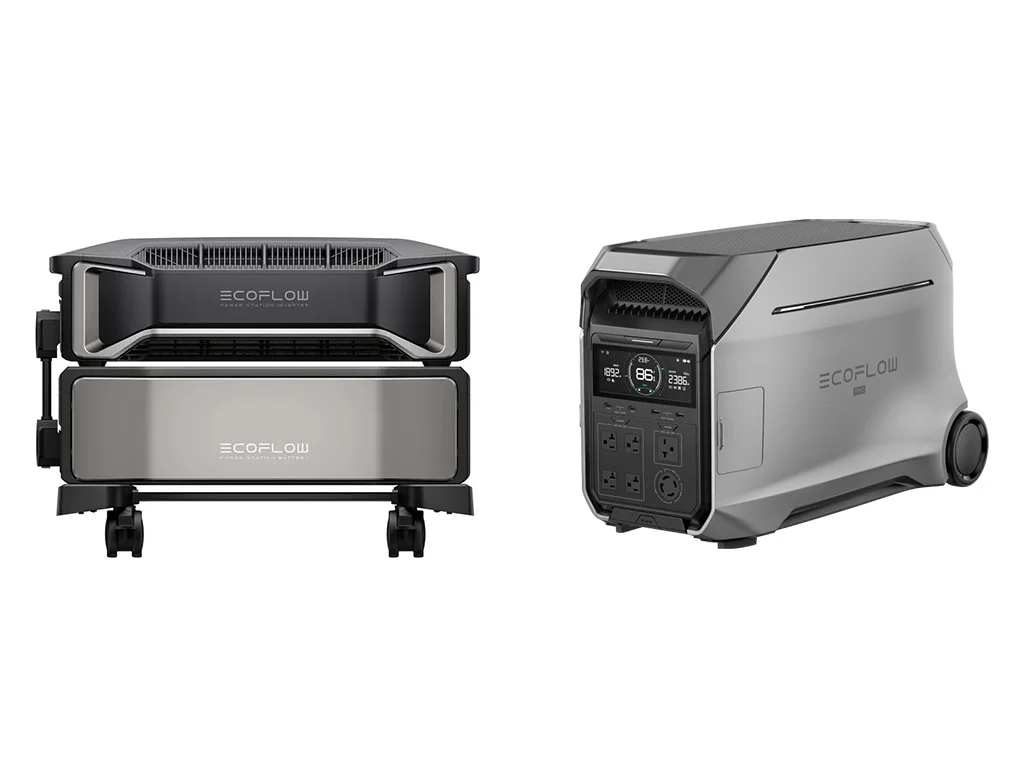
Size and Portability: Weight and Dimensions
When it comes to portable power stations, weight and dimensions are key factors in determining how easily you can move them around. Unlike bulky DIY systems, portable units like the EcoFlow Delta Pro Ultra and Delta Pro 3 give you the freedom to take your power wherever you go. Take them for an RV adventure, camping trip, or simply moving between homes.
You’d probably think the Delta Pro Ultra is the heavier of the two since it has superior power. Yet it has a different design approach. The DPU inverter unit does not include any battery. The downside is that you always have to use two units.
The advantage of the two-part design is that it keeps weight down despite the super-powered specs. The DPU inverter is only 70 lbs (32 kg). The battery is the heavier unit, pushing over 100 lbs. You can stack them on a wheeled cart for slightly easier mobility.
The Delta Pro 3 includes an integrated battery. It weighs a whopping 113.5 lbs (51.5 kg), but the DP3’s all-in-one design may be beneficial for portable setups. The built-in wheels help too. Lifting it will be a struggle though.
Portability Verdict: Both of these are beastly units that likely need two people to move. But the Delta Pro 3 steps in front with integrated battery and wheels. The Pro Ultra separates the battery from the inverter to avoid excessive weight, but the battery units are still very heavy. And you’ll always need two pieces no matter where you go.
| Product | EcoFlow DELTA Pro Ultra | EcoFlow DELTA Pro 3 |
|---|---|---|
| Weight (lbs) | 70lbs | 113.5lbs |
| Weight (kg) | 31.7kg | 51.5kg |
| Dimensions (in) | 27.2×18.9×8.4in | 27.3×13.4×16.1in |
| Dimensions (mm) | 690x481x214mm | 693x341x410mm |

Final Verdict: Our Top Recommendation
After comparing the EcoFlow Delta Pro Ultra and Delta Pro 3, there’s no doubt both power stations offer impressive features and capabilities. They can dish out big power from the inverter, have much larger batteries than almost any other power station, and have the outputs to make it easy to power anything from small devices to big appliances.
Yet there’s just no getting around the Delta Pro Ultra’s absolutely mind-blowing growth potential. Not only does it harness more power and output in each unit, the modular expansion allows for growth that’s nearly three times that of the DP3. It is hands-down the better choice.
At the same time, the Delta Pro 3 is worthy of investment too. It has an advantage of being more compatible with the EcoFlow Alternator Car Charger and the EcoFlow Dual Fuel Generator, plus it has an integrated battery unit that makes portable use much easier. Go with the DPU if there’s any chance you’ll outgrow the DP3.
| EcoFlow Delta Pro Ultra | EcoFlow Delta Pro 3 |
|---|---|
Here’s a recap of key points:
- Inverter and Outputs: The Delta Pro Ultra handles heavy-duty appliances like a champ while the Pro 3 still has high-amp and high-voltage outputs but may struggle when you stack on heavy-duty appliances.
- Battery Capacity: The Ultra has a larger 6,000Wh capacity and a vastly superior 90kWh maximum, perfect for long-term power needs. The Pro 3 is more compact at 4,096Wh and 36.9kWh max, which is still a lot of power although more limited for heavy-duty appliances like whole-home air conditioners.
- Charging Speeds: Faster AC and solar charging come with the Delta Pro Ultra, including much higher voltage limit for the solar inputs. However, the Delta Pro 3 has better compatibility with EcoFlow Alternator Charger and Dual Fuel Generator.
- Portability: While both units are hefty, the Pro 3’s integrated battery and wheels give it a slight edge in usability. The DPU takes an intelligent approach to keep weight down by keeping the batteries separate, but it also means you’ll always need two units.
- Value: The price per Wh of these two power stations offers excellent value, typically among the lowest in the industry. Since they’re similar on a per Wh basis, the Pro Ultra is a slightly better value because it comes with superior capabilities.
Final Recommendation: For the biggest power needs, there’s no beating the EcoFlow Delta Pro Ultra. It has more power with a single unit and vastly superior maximum specs with a full system. If you don’t need that excessive amount of power, the Delta Pro 3 will leave more cash in your pocket. It also comes with an integrated battery that makes portable use a little easier, all without losing much as far as connections and powerful outputs go.
Get 5% off most EcoFlow orders with SOLARWAY5OFF discount code.

|
EcoFlow DELTA Pro Ultra |
DPU on EcoFlow DPU on Amazon |

|
EcoFlow DELTA Pro 3 |
DP3 on EcoFlow DP3 on Amazon |
Specs Comparison Chart: EcoFlow Delta Pro Ultra vs. EcoFlow Delta Pro 3
Here is a spec comparison chart of the EcoFlow Delta Pro Ultra and EcoFlow Delta Pro 3 side-by-side. We also include links to the user manuals for these power stations so you can check out any final details.
| Product | EcoFlow DELTA Pro Ultra | EcoFlow DELTA Pro 3 |
|---|---|---|
| Battery | 6,000Wh | 4,096Wh |
| Battery (System Max) | 90,000Wh | 36,864Wh |
| AC Output | 7,200W | 4,000W |
| AC Output (System Max) | 21,600W | 12,000W |
| AC Input | 7,200W | 4,800W |
| AC Recharge Hours (Est.) | 1h | 1h |
| Solar Input | 5,600W | 2,600W |
| Solar Recharge Hours (Est.) | 1.3h | 1.9h |
| Solar Input (System Max) | 16,800W | 7,800W |
| Warranty | 5 years | 5 years |
| Weight (lbs) | 70lbs | 113.5lbs |
| Weight (kg) | 31.7kg | 51.5kg |
| Dimensions (in) | 27.2×18.9×8.4in | 27.3×13.4×16.1in |
| Dimensions (mm) | 690x481x214mm | 693x341x410mm |
| Solar Input 1 Watts | 4000W | 1600W |
| Solar Input 1 Volts Min | 80V | 30V |
| Solar Input 1 Volts Max | 450V | 150V |
| Solar Input 1 Amps | 15A | 15A |
| Solar Input 2 Watts | 1600W | 1000W |
| Solar Input 2 Volts Min | 30V | 11V |
| Solar Input 2 Volts Max | 150V | 60V |
| Solar Input 2 Amps | 15A | 20A |
| Battery Type | LiFePO4 / LFP | LiFePO4 / LFP |
| Battery Cycles | >3,000 | >3,000 |
| 120V Outlets | 5 (4x20A, 1x30A) | 5 (1xTT-30R) |
| 240V Outlets | 1x30A | 2 (L14-30 & 6-20R) |
| UPS / EPS | 0ms / 20ms | 10ms |
| USB-A Ports | 2x15W | 2x18W |
| USB-C Ports | 2x100W | 2x100W |
| Other DC (Anderson or other) | 1x378W (30A) | 1x378W (30A) |
| DC 5521 (Barrel Plug) | – | 1x63W 5A |
| Connectivity | WiFi / Bluetooth / 4G | WiFi / Bluetooth |
| User Manual | User Manual | User Manual |
| Buy Now | Buy DPU | Buy DP3 |
| Buy on Amazon | EcoFlow DPU on Amazon | DP3 on Amazon |
Get 5% off most EcoFlow orders with SOLARWAY5OFF discount code.

|
EcoFlow DELTA Pro Ultra |
DPU on EcoFlow DPU on Amazon |

|
EcoFlow DELTA Pro 3 |
DP3 on EcoFlow DP3 on Amazon |
Wrap Up
Both the EcoFlow Delta Pro Ultra and Delta Pro 3 are outstanding portable power stations ready for very serious energy needs. The Delta Pro Ultra excels in sheer power and modular expansion potential, capping out at the absolute top of heavy-duty applications like home backup with large appliances. And it comes with better solar input.
The Delta Pro 3 is a solid, more affordable option that delivers great performance for RV users and slightly smaller home setups. It still has significant single-unit specs (with an integrated battery) as well as modular expansion. It just doesn’t reach quite as high as the DPU. The EcoFlow car charging and fuel generator compatibility offer a nice touch.
For more detailed information, check out our EcoFlow Delta Pro Ultra review and EcoFlow Delta Pro 3 review. You can also explore other comparisons:
- EcoFlow Delta Pro Ultra vs. Anker F3800
- EcoFlow Delta Pro Ultra vs. Bluetti EP900
- EcoFlow Delta Pro Ultra vs. Bluetti AC500
- EcoFlow Delta Pro 3 vs. Bluetti AC500
- EcoFlow Delta Pro 3 vs. Jackery 2000 Plus
- EcoFlow Delta Pro 3 vs. Anker F3800
Don’t suffer through another power outage or shoddy shore power situation. Get the power station that can unlock the confidence of energy independence today.







